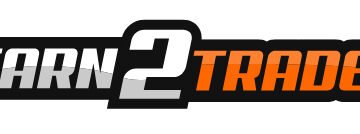Day trading with limited capital is one of the toughest challenges in the retail trading world. Yet with the right mindset, tools, and discipline, it’s entirely possible to grow a small account over time. In 2025, evolving markets, changing regulations, and increasing access to prop trading firms create both fresh opportunities and new pitfalls.
This guide explores how day traders can reliably grow a small account in 2025, while highlighting prop firm evaluation discounts, cheap futures prop firm evaluations, and the best prop trading firms for beginners. (Including 📢 80% OFF Apex Trader Funding Evaluations – Pass in 1 Day! — details below.)
Table of Contents
- Why Growing a Small Account Is Hard — and Why It’s Worth It
- Key Constraints in 2025: Rules, Costs & Leverage
- The Mindset & Discipline of Small-Account Growth
- Best Markets & Instruments for Small Accounts
- Strategy Frameworks for Small Account Day Trading
- Risk & Money Management Rules
- Scaling: When & How to Add Capital
- Prop Firms & Funding Paths: Pros, Cons, and Discounts
- How to Use Prop Firm Evaluations Wisely
- Case Study / Sample Trajectories
- Final Checklist + Action Plan
- FAQs
1. Why Growing a Small Account Is Hard — and Why It’s Worth It
The challenge: limited margin & exposure
Small accounts inherently suffer from constraints on buying power, leverage, and diversification. One losing trade can severely dent performance, and commissions + slippage eat into returns.
The upside: higher return multiples
When starting small, consistent gains of 1–3 % per week can compound dramatically. A $1,000 account turning 2 % per week (net) grows significantly over time — if one avoids drawdowns.
The trade-off: speed vs survival
Many new traders chase “fast growth” and blow out accounts. The true goal is sustainable compounding — growing slowly but steadily, while protecting capital.
2. Key Constraints in 2025: Rules, Costs & Leverage
Pattern Day Trader (PDT) Rules (U.S. equities)
In the U.S., a trader who makes 4 or more day trades within five business days in a margin account is flagged as a Pattern Day Trader, and must maintain $25,000 minimum equity. Wikipedia+1
That rule severely limits aggressive trading in small equity accounts using stocks.
Workaround: use a cash account (so trades settle before reuse), or trade futures / forex / crypto markets where PDT rules do not apply.
Commissions, Slippage & Transaction Costs
Even “zero commission” brokers have slippage or spread costs. For small accounts, high turnover can kill profits. You must minimize unnecessary trades.
Leverage and Margin
In futures and forex, you get higher leverage, but also amplified risk. Use only what you can afford to lose, with tight risk controls.
Regulatory Changes in 2025
FINRA has recently voted to reform the PDT rule, potentially lowering required equity from $25,000. MarketWatch If approved, that change could open new possibilities for U.S. small-account traders. Stay updated.
3. The Mindset & Discipline of Small-Account Growth
- Focus on 1 % to 2 % per week (or less) rather than shooting for 10 %+
- Accept small losses quickly — cut losers at your stop
- Avoid revenge trading — never try to “make it back” in one go
- Journal every trade — build feedback loops
- Have a “play” capital buffer — a separate portion for learning and experimentation
- Patience is the growth path — compounding slowly wins over time
“Go small… only way. Cut your losses, be patient, wait for opportunities, keep your winners longer.”
4. Best Markets & Instruments for Small Accounts
Not all instruments are equally friendly to small accounts. Here’s a breakdown:
| Market / Instrument | Pros | Cons & Notes |
|---|---|---|
| Micro / Mini Futures (e.g. Micro-E-mini S&P) | Accessible leverage, liquid, predictable behavior | Requires learning futures structure |
| Forex / FX Pairs | Very high liquidity, 24-hour access | Beware of spreads, overnight risk |
| Index Options / Spreads | Defined risk, sometimes lower capital | Complexity, commissions |
| Penny Stocks / Small Caps | Big moves possible | Very high volatility, slippage, liquidity risk |
| Large-cap momentum stocks | More stable, easier to read volume | Lower percent move per trade |
Many small-account traders favor micro futures or forex to avoid PDT constraints in U.S. equities.
5. Strategy Frameworks for Small Account Day Trading
You need frameworks more than “setups.” Below are foundational strategies that adapt to small capital.
5.1 Momentum Breakouts with Confirmation
- Wait for volume shift + price breaking a key structure
- Enter only after confirmation (e.g., retest or pullback)
- Use small position size until clarity
5.2 Fade the Excess (Mean Reversion)
- Spot short-term overextensions
- Fade weak breakouts or intraday spikes (if conditions favorable)
- Requires strong discipline & execution
5.3 Opening Range Breakout / Opening Range Fade
- Use opening 5–15 minute range to define bias
- If price breaks out, follow direction; if it fails, fade the break
- Requires quick decision-making
5.4 Pyramiding & Scaling In
- Start small, add to winners (pyramiding) only when trend confirms
- Avoid doing this in volatile or unknown zones
5.5 Risk-Adjusted Scalping
- Very small targets (e.g. +2–5 ticks in futures)
- High win rate, but minimal margin for error
- Best for high-liquidity instruments
6. Risk & Money Management Rules
- Risk ≤ 0.5 % – 1 % of account per trade
- Max 2–3 losing trades in a row before stepping aside
- Use stop-losses — always
- Protect capital first, profits second
- Don’t overtrade — fewer, high-probability setups
- Manage total intraday risk (e.g., if you lose 3 % in a day, stop trading)
Working with small accounts demands ruthless discipline.
7. Scaling: When & How to Add Capital
You don’t scale until you prove consistency. A typical scaling path:
- Grow from $500 → $1,000
- From $1,000 → $2,000
- From $2,000 → $5,000
Once at a stable $5K base (9–12 months of consistency), you can either:
- Funnel profits into a larger account
- Transition into prop firm funding challenges
- Combine small accounts to trade with more leverage
8. Prop Firms & Funding Paths: Pros, Cons, and Discounts
Using a prop firm is one of the most powerful scaling paths for a small-account trader. Instead of each trade being capital-bound, your edge is your skill plus risk control.
8.1 Why Use a Prop Firm?
- Access to larger capital
- Ability to trade full-size contracts
- Risk is to the firm’s capital (within drawdown limits)
- Potential for profit splits
8.2 Risks / Drawbacks
- Strict rules (drawdown, max draw, daily loss limits)
- Task-based evaluations (you must prove skill)
- Psychological pressure
- Fee or evaluation cost
8.3 Cheap Futures Prop Firm Evaluations & Deals
Prop firms often run discounts and promotions. Some tips:
- Hunt for “prop trading evaluation discount” or “cheap futures prop firm evaluations” codes
- Compare the reset costs, profit splits, and rules
- Check legitimacy (reviews, payout history)
One firm actively offering a top-tier discount is Apex Trader Funding:
📢 80% OFF Apex Trader Funding Evaluations – Pass in 1 Day!
- 80% OFF ALL Evaluations & Future Months
- Pass in just 1 day
- $50 resets for ALL Evaluations
- $140 one-time PA activation fee
- Take unlimited evaluations – up to 20 funded accounts
- Apex has already paid out over $581 MILLION to traders
- Use Code: PROPDEALS at checkout
- Click Here: https://tinyurl.com/ApexPropDeals
This is among the best deals for cheap futures prop firm evaluations, and gives small-account traders leverage to scale.
When selecting a prop firm, aim for options with moderate evaluation difficulty, fair profit splits, and community feedback.
8.4 Best Prop Trading Firms for Beginners
Here are traits to prioritize:
- Lower barrier to entry (smaller check amounts)
- Transparent rules and disclosures
- Good payout history / reputation
- Supportive community + educational resources
9. How to Use Prop Firm Evaluations Wisely
- Only apply to challenges when your win rate is stable
- Treat the evaluation like real money — don’t overtrade
- Use a strategy you’re comfortable with
- Keep a fallback plan (your small account) active
- Leverage resets or discounts (like Apex’s 80% off)
Start your evaluation now using the Apex discount and begin your scaling journey.
10. Case Study / Sample Trajectories
Here’s a hypothetical but realistic path for a disciplined trader:
- Start with $1,000 in micro-futures
- Aim 2 % net per week → ~8 % per month
- After 3–4 months → $1,500 – $1,800
- Use profits to fund a prop firm challenge (discounted)
- Pass challenge, secure a $50,000 funded account
- Trade a portion, withdraw profits, compound further
With consistent risk control, that trader might scale to five figures in 12–18 months.
11. Final Checklist + Action Plan
- Choose a market compatible with small accounts (micro-futures, forex)
- Develop 1–2 high-quality strategies
- Rigidly enforce risk per trade (max 0.5 – 1 %)
- Track performance in a journal
- Wait for consistent profitability before applying to prop evaluations
- Use promo codes and discounts to cut challenge cost
- Be patient — small compounding wins matter
Get your discount and save now with the Apex Trader Funding offer before it expires.
12. FAQs
Q: Is it realistic to grow $500 to $10,000 in a year?
A: Possible, but extremely difficult. A safer goal is consistent 1–3 % weekly returns and slow compounding.
Q: Will paying for a prop evaluation guarantee success?
A: No. It’s still performance-based. But good discount deals reduce risk, making it more accessible.
Q: If FINRA changes PDT rules, will small account traders benefit?
A: Yes, relaxing PDT rules could allow more flexibility in U.S. equities. Watch regulatory changes closely. Investopedia+1
Q: Should I start with a prop challenge or trade on my own?
A: Start on your own until you prove consistency, then use prop funding to scale without risking your capital.
In Summary
Growing a small account in 2025 is not easy — but with discipline, patience, strategic instrument choices, and smart use of prop firm evaluations (especially discounts), it’s entirely possible. Use the 80 % OFF Apex Trader Funding Evaluations offer to reduce your evaluation cost and get a head start.
Apex Trader Funding:
- Get Your Discount – use code PROPDEALS
- Start Your Evaluation today
- Save Now on prop firm costs






No Comments
Leave Comment